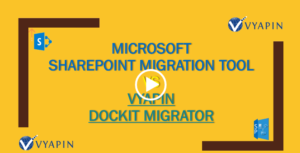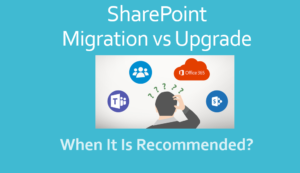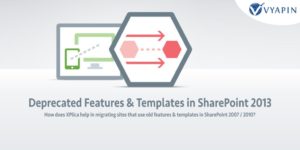Here are some useful tips to help you carry out a successful SharePoint 2010 to SharePoint 2013 upgrade.
Plan and prepare your SharePoint 2013 destination
Before you actually begin upgrading your Site Collections and databases to SharePoint 2013, you need to plan how you will setup the SharePoint 2013 Farm, create and connect the database and how you will create the Site Collections. You may have to configure the Server operating system and the database like Windows Server 2012 and SQL Server 2012. Only when these are in place can you create your SharePoint 2013 environment. You also need to identify – how this environment will differ from SharePoint 2010, the missing components and install or upgrade them. An important task during the preparation is to identify Sites that are unused or sparingly used. You may decide not to upgrade them or, merge that content to other relevant Sites. Planning this way can simplify your upgrade and shorten the time needed as well.
Plan how you intend to meet the time and space requirements for the migration
You will need a large database to upgrade SQL, content databases, Site Settings, customizations, Web Parts, Workflows, etc. It’s always safe to create double or triple the size of the existing SharePoint 2010 database as it will reduce the time needed, as well as help in managing changes after the upgrade.
Perform dry runs, test the results and repeat the dry runs till satisfied
Always execute dry runs to identify upgrade bottlenecks. This will help in – identifying the points where upgrade can seize up, testing the level of end user functionality after the upgrade, revealing areas that need to be mapped properly in order to assign correct permissions, revealing shortcomings that need to be rectified in order to bring the data up-to-date, etc. After a few attempts, the administrators may gain enough knowledge and confidence for a successful upgrade.
Identify and prioritize SharePoint 2010 customizations
It’s essential to identify and clearly map user defined customization so that subsequent to the upgrade, SharePoint users can continue to work as usual. Hence it’s necessary that you identify all the Custom Content Types, Workflows, Web Applications, Themes, Document Templates, Lists, Metadata columns, public URLs, Site Collections, Web Parts and all the possibilities in the Site Content. Any differences in these can interfere with the upgrade or the end result may not be satisfactory to the SharePoint user.
Use PowerShell scripts if and wherever necessary
Tasks like attaching the databases or mounting them are performed through scripts. These not only ensure a safe handling of the database but automate the task resulting in reduced or no errors. Hence it’s necessary to script all those tasks that are better done in this manner.







